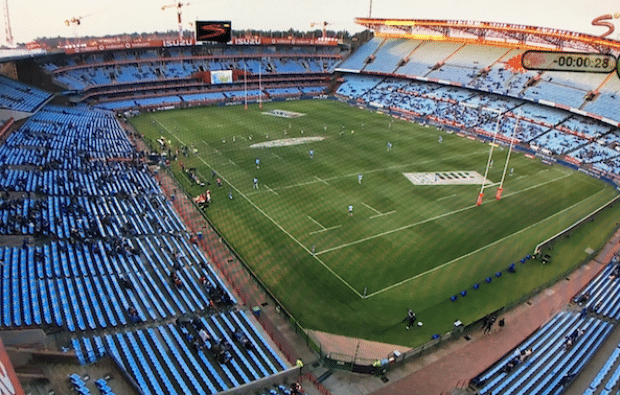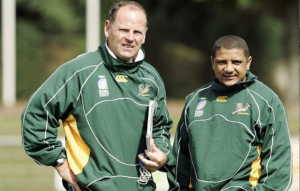SA Rugby only has itself to blame for the sad demise of the Currie Cup, writes SIMON BORCHARDT.
At the launch of the Pro14 in Cape Town last Friday, SA Rugby CEO Jurie Roux said the length of the Currie Cup tournament could be reduced from 2018 to prevent it from overlapping with other competitions.
This year, the Currie Cup began on the same weekend as the Super Rugby quarter-finals, which meant the Golden Lions and Sharks had to start their campaigns with their Provincial Rugby Challenge teams (Western Province had a bye). And with the Pro14 starting on 1 September, the Free State Cheetahs – the current Currie Cup champions – will most likely field a B team in the latter stages of the domestic tournament, including the playoffs if they get that far.
The current status of the Currie Cup was again highlighted when the match between the Golden Lions and Griquas was played as a curtain-raiser to the Super Rugby semi-final at Ellis Park. While a decent crowd watched the Lions take on the Hurricanes, hardly any of them bothered to watch the Currie Cup game beforehand.
A week later, just 2,792 fans were at Newlands to watch Western Province’s Currie Cup match against the Pumas. Later that afternoon, 25,000 people packed into Faure Street Stadium to watch the schools match between Paarl Boys’ High and Paarl Gym. This suggests that while South Africans are still passionate about rugby, they have totally lost interest in the Currie Cup.
And it’s not just in the Western Cape. Stadiums have been almost empty for Currie Cup matches all around the country. When the Blue Bulls played the Sharks at Loftus last Wednesday (on a public holiday), the crowd (or lack of it) was an absolute embarrassment.
Lions CEO Rudolf Straeuli, who likes to keep a relatively low profile, felt the need to speak out about how the Currie Cup has been structured. He said the competition could not be allowed to overlap with Super Rugby, as it did this year. ‘It’s not good for sponsors, it’s not good for commercial and it’s not good for the players,’ he added.
Roux’s plan to prevent this from happening again next year seems to be to reduce the length of the Currie Cup by having just a single round of league-stage matches (rather than home and away). With seven teams in the Currie Cup Premier Division, this would mean six rounds of league matches, followed by two weeks of playoffs (semi-finals and final). That would mean eight rounds of Currie Cup rugby, or possibly six if there were a couple rounds of midweek matches crammed in somewhere. Even then, though, the tournament would have to overlap with either Super Rugby or the Pro14.
Super Rugby will next year return to a 15-team format, but that will see each team playing 16 conference-stage matches (instead of 15 under the 18-team format). The 2015 Super Rugby final was played on 4 July, because it was a World Cup year and there were no June Tests, which meant Super Rugby could play straight through. In 2014, though, when there were June Tests, Super Rugby began on 15 February, with the final taking place on 2 August.
The Super Rugby final is therefore likely to continue to be played in early August, with the Pro14 again starting in early September. That would leave a window of three weeks between the competitions, which is obviously not enough time in which to schedule the Currie Cup. It will either have to start during Super Rugby and finish before the Pro14 or start after Super Rugby and end during the Pro14.
It is SA Rugby’s fault that we are in this mess. Its administrators were part of the decision to expand the Super 12, which Roux now admits was the ideal format for the Sanzaar tournament.
In 2005, the last season of the Super 12 kicked off on 25 February, with the final played on 28 May. The Currie Cup began on 19 August that year and culminated with the final on 22 October. The Springboks played their last match of the Tri-Nations on 27 August, which meant the Boks were able to play in the latter stages of the Currie Cup, including the playoffs. Now the contracted Boks take no part in the Currie Cup at all, while an increasing number of other players opt to earn big bucks in Japan while the Currie Cup is on and then return for Super Rugby the next season.
When discussing the Currie Cup’s demise, I always ask people if they think the French Rugby Federation or England’s Rugby Union would ever allow an expanded European Cup to kill off the Top 14 and Premiership. Their answer: Of course, not!
Both of those tournaments still matter – a lot – to rugby fans in those countries, because the clubs only release their players for Test duty, and have full-strength teams for most of the league stage and the playoffs. That’s why the Stade de France and Twickenham are always packed to capacity for the Top 14 and Premiership finals.
It is going to be interesting to see how SA Rugby plans to breathe life back into the Currie Cup next year, because unless changes are made to the rugby calendar, the tournament is going to continue being a glorified Vodacom Cup for the foreseeable future.





